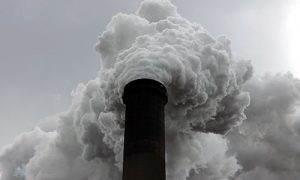 ETS: Only A Side Effect
ETS: Only A Side Effect
The European Emissions Trading System (EU ETS) tries to lower greenhouse gases by putting a price on carbon and trading it in the form of allowances. It is the world’s biggest trading system for emissions and was launched over 10 years ago. The big downside of the supposed fairy tale of a miraculous cap-and-trade system is that there is no proof that the ETS has actually caused reductions in greenhouse gas emissions.
A study commissioned by the EU Commission finds that the ETS alone was not the driving factor in companies and sectors choosing to invest in carbon-efficient solutions. Rather, these actors were mainly influenced by other factors like the cost of energy and raw materials, as well as the growing environmental awareness of stakeholders and consumers.
Regulatory Versus Cap-and-trade Approach: The Case of Acid Rain in the EU and the United States
The cap-and-trade approach does not really work and often stands in the way of more effective regulatory measures. This can be seen in other cases: In the 1990s, the United States tried to address the danger of acid rain by capping and trading nitrogen oxide (NOx) and sulphur dioxide (SO2) emissions. Even though proponents of the method claim it worked, just like in the case of the EU ETS, other factors like facilities switching to an alternative fuel source influenced emission reductions by far more than the market solution.
While the United States reduced their NOx emissions by 12.5 percent and SO2 emissions by 31.6 percent, the rates in the EU fell 26 percent and 64 percent respectively. In Los Angeles, California, RECLAIM, a trading system meant to reduce NOx, was even responsible for a halt in emission reductions. Because of the demotivating effect of the system for pollution control innovation, emissions even partially increased.
The main reason why the EU was so successful in reducing emissions two times as much as the United States is the policy approach: The European Union used regulation rather than market-based solutions.
From Bad to Worse?
Now, phase IV of the controversial emissions trading system is being discussed in EU institutions. How do they reform the ETS so that it delivers results? How do they get the EU on track for its own emissions targets? How to they align all of this with the Paris Agreement? The Commission’s proposal to reform the ineffective system is currently being discussed in the EU Parliament and should be voted on this year.
Given the impressive ineffectiveness of the ETS, one would expect promising reform suggestions, plans to tackle the many weak points of the current system and a determined schedule to reduce emissions in line with EU-wide and global commitments. Unfortunately, the Commission`s proposal is weak, and Ian Duncan, the rapporteur responsible for the dossier in the EU Parliament, is doing his part to make things worse.
Here are a few of the main shortcomings of the current phase of the ETS:
- Energy efficiency measures and other measures to lower emissions are already being taken independent of the trading system. Together with the economic crisis this leads to fewer emissions in the ETS sector. The ETS’ very low reduction target was literally overtaken by mere business-as-usual. As a result, the prices for emitting a ton of CO2-equivalent (CO2e) emissions decreased drastically, making it cheap to pollute. This price volatility makes it impossible for businesses to predict the final costs and benefits of investing in emission-saving technologies, which leads to companies avoiding making changes rather than going greener.
- Emission reductions are already happening due to several factors; still the market is flooded with free and cheap pollution allowances. This has led to a surplus of billions of allowances in recent years, especially in the steel sector.
- The ETS constituted a gateway for fraudulent, dubious offsets in developing countries and windfall profits for companies that passed the carbon price costs on to consumers.
The ETS is no tool for emission reductions. On the contrary, low-carbon technology innovation is blocked and several businesses profit from polluting: Energy-intensive companies, especially in the steel and cement sectors, earned €24 billion in profits through the ETS since 2008 — that is money transferred from the taxpayers to industry!
The European Union cannot continue to try and convince us of keeping up a system that, for almost a decade, has proven nothing but its own futility. It is time to change our approach and to stop supporting measures that only benefit industry, not the planet.
In Part II of this blog, I will look deeper into the EU’s plans for the next phase of the ETS.


